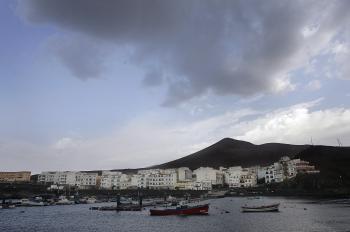Tokyo, Japan
Some subway stations in Tokyo are creating piezoelectricity from the footsteps of passengers walking through halls, station gates, and staircases. The new technology uses flooring tiles containing piezo elements that collect the pressure and vibrations from passengers and turn it into electricity. The generated power is used for subway lighting and is also being adopted at some stations for automatic ticket barriers and display panels, reports businessgreen.com. Further expansion plans for this innovative system include using it at nightclubs as well as other major subway stations around the world.
Lima, Peru
In the desolate neighborhoods of Lima, Peru, where water is scarce, expensive, and precious, ‘fog catchers’ have been installed to collect fog and turn it into fresh water for crops and personal use for local residents. Engineered by German biologist Anne Lummerich, the 26-foot-by-13-foot panels were installed on the mountaintop of a slum area and are able to collect up to 16 gallons of water per night in the wintertime. After the water droplets are collected on the five panels, they run down the nets into the drain canals and flow into storage tanks equipped with water-purifying pills to keep out mosquitoes.
Bristol, England
Researchers at Bristol University in England hope to use kettle vibrations to collect power to charge small electronic devices like an MP3 player or a heart rate monitor, reports The Guardian. Previous devices that could collect energy from vibrations required a certain frequency, or a number of vibrations per second, while the new device will be able to collect nonuniform vibrations over a larger range of frequencies using a resonance process to amplify even the smallest vibrations. The university also plans to apply this power extraction method to other household appliances, making it a potentially promising source of clean commercial electricity.
Perth, Australia
Australia is introducing air conditioners that run on natural sources of hot water in many commercial buildings, hospitals, airports, and shopping centers. Conventional air conditioners, work like refrigerators and emit chemicals that are detrimental to the environment, while the new absorption units will use geothermal energy as its power source to generate cool air. Absorption air conditioners also do not depend on electricity or natural gas, rather they use geothermal water flow from the Perth Basin, which is a natural rift containing permeable aquifers that contain hot geothermal water, explains the Green Rock Energy company.
Seoul, Korea
Korean researchers are using a metabolically engineered strain of the E.coli bacteria in a one-stage fermentation process to produce biodegradable, low in toxicity plastic. KAIST University in Seoul found out that the Polylactic acid (PLA) and its copolymers, which are molecules in the form of plastics and rubbers, can be made using renewable resources like the engineered E.coli, reported CNN. The report also says that until now, PLA was expensive and costly to produce, while the use of E.coli does not need fossil-fuel based chemicals and toxic materials in its production.
Bangalore, India
India’s cell phone towers are switching from diesel power generators to solar panel energy. This project is going to be incorporated into India’s National Solar Mission that aims at installing 20,000 megawatts of solar power—enough to power more than 1 million plug-in hybrid vehicles—by the year 2022. Cell phone towers use energy nonstop and also need to support the maintenance of air conditioning equipment. The reduction in carbon emissions and need for resources allows for cheaper power generation, writes CleanTechnica.
Kenya-Bangladesh
El Hierro Island, Canary Islands, Spain
UNESCO declared the small island El Hierro as the first Biosphere Reserve island, which will be 100 percent reliant on Renewable Energy Systems (RES). This initiative involves the introduction of a variety of energy production systems like a wind farm, a hydroelectric power station, solar panels, wind technologies, alternative transportation methods, and other changes. The self-sufficient energy system, as described by Renewable Energy for Europe, will be able to sustain itself purely by relying on the RES and the support of Canary Islands’ Technological Institute (ITC).
São Paulo, Brazil
Native plants can help polluted soils recover. The use of native plant species for improving soil polluted with mercury, lead, nickel, and other metals is a goal of research at the Institute of Geosciences (IGC) at the University of São Paulo, Brazil. Phytoremediation, a technique still little known in Brazil, may be used in the decontamination in industrial or mining areas. The scientific basis is that the vegetation planted on polluted sites captures the contaminants themselves and some species have greater strength and affinity for a particular type of metal. The method is cheaper compared to conventional procedures and can still allow in some cases the reuse of the collected metals.









Friends Read Free